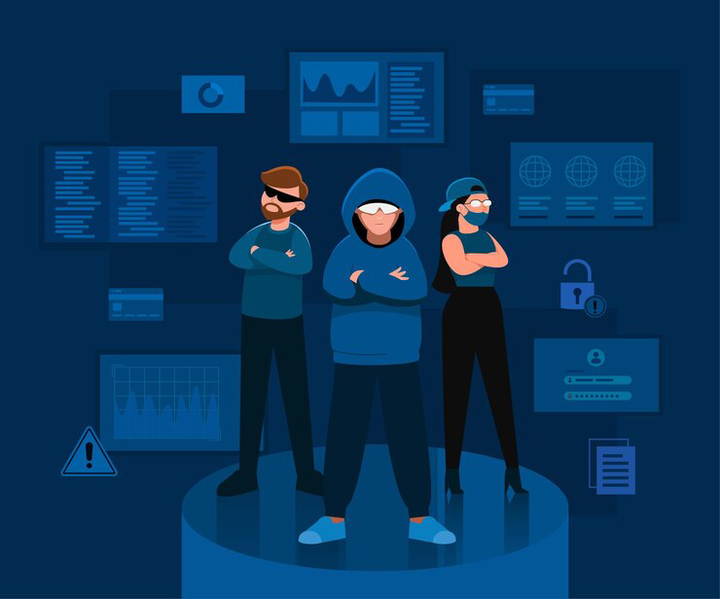Reimagining Security Engineering using Semgrep and OPA
 Security Engineering
Security Engineering
In today’s rapidly evolving technology landscape, ensuring the security of modern applications is a daunting task. With code running on containers in cloud environments, security engineers face the challenge of protecting not just the application itself but also its underlying infrastructure. Manual evaluation of security vulnerabilities is impractical given the volume and complexity of changes constantly being made. This is where tools like Semgrep and OPA (Open Policy Agent) come into play, providing the capability to identify and mitigate security risks proactively.
Observing Changes
Security engineers are tasked with observing changes in four critical aspects of modern applications: code, containers, clusters, and cloud environments. Their responsibility is to ensure the confidentiality, integrity, and availability (CIA) triad is not compromised. While change is constant, security teams must not act as gatekeepers, which can slow down development processes. Instead, they should leverage automated tools like Semgrep and OPA to identify vulnerabilities as soon as they are introduced in the code.
Utilizing Semgrep and OPA
Semgrep excels at identifying application bugs at the code level, while OPA focuses on policy violations across containers, clusters, and cloud environments. Semgrep can detect syntaxes of various languages and non-standard text to identify common vulnerabilities like injection, SSRF, XSS, and misconfigurations. On the other hand, OPA works seamlessly with JSON, allowing it to analyze Kubernetes manifest files, Terraform plans, and other JSON-formatted data to enforce security policies.
Identifying AWS Secret Keys with Semgrep:
- Semgrep rule detects AWS secret access keys leaked in source code. Example rule: https://semgrep.dev/playground/r/yeTQoe/generic.secrets.security.detected-aws-secret-access-key.detected-aws-secret-access-key
Dockerfile Security Checks using OPA:
- OPA Rego policies enforce security baseline on Dockerfiles. Example implementation: https://medium.com/@madhuakula/dockerfile-security-checks-using-opa-rego-policies-with-conftest-32ab2316172f
Building Custom Rules
Security engineers can develop custom rules for Semgrep and OPA based on threat models specific to their products. For instance, when building a user login page with Java backend and AngularJS frontend deployed as a Docker container on AWS EKS, threat cases can be translated into Semgrep and OPA rules
Code
- Can someone perform an SSRF attack ? : Write a Semgrep rule to identify all possible places where java.net.URL or similar classes are being used and a tainted parameter is being passed to the class/function.
- Can an AWS Key be leaked ? : Write a semgrep rule that checks for AWS Key regular expression
Container
- Is my container running as root ? : Write a Semgrep rule that checks for presence of a USER attribute in dockerfile or write an OPA rule that can check the same.
- Is my container building from an approved base image ? : Write a semgrep rule to check a regular expression that checks for the approved base image or write an OPA rule that can check the same.
Cluster
- Are approved container images running in the cluster ? : Convert the K8s manifest file in JSON format and then check if images are compliant using OPA
- Are kubernetes deployments having memory and cpu utilizations ? : Convert the K8s manifest file in JSON format and then check if deployments have the memory and cpu utilisations defined using OPA.
Cloud
- Are EC2 instances IMDSv2 compliant ? : Convert the terraform plan into JSON and then write OPA query to identify non-compliant IMDSv2 instances
- Are S3 Buckets with public access ? : Convert the terraform plan into JSON and then write OPA query to identify non-compliant S3 buckets
Conclusion
By leveraging tools like Semgrep and OPA, security engineers can achieve a high level of security by continuously developing rules that align with specific threat models. Automation of security checks not only improves the security posture of modern applications but also enables faster development cycles. Embracing a proactive approach to security engineering empowers organizations to stay ahead of emerging threats in today’s dynamic technological landscape
Shameless Plug
My training titled “Securing Four Cs of a Software Product : AWS Edition '' exclusively focuses on tools like semgrep and OPA where students will understand how they can write semgrep and OPA rules and also integrate them into Github Actions.
Checkout the Video Preview of my training here
https://www.youtube.com/watch?v=HVU3nNbFJCo
Registration Links for the training
3-4th August , Las Vegas , USA
5-6th August , Las Vegas , USA